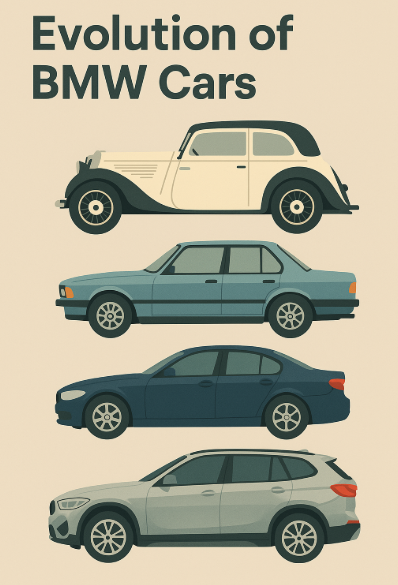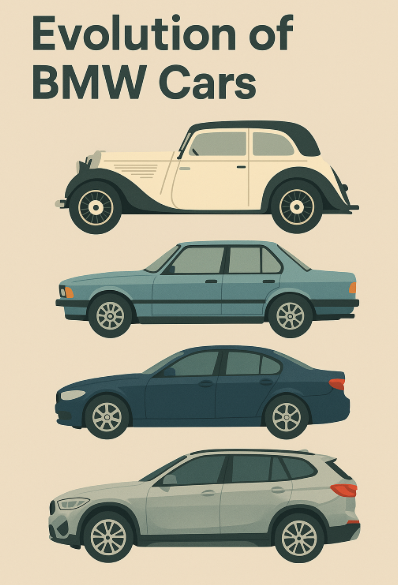What SMEs Can Learn from BMW: How Design Language Builds Brand Strength
What can small and medium-sized businesses learn from a global automotive powerhouse like BMW? While the scale differs, the principles of visual identity, brand consistency, and emotional design are just as relevant. By examining how BMW uses design as a strategic asset, SMEs can gain insight into building stronger, more recognisable brands that resonate with customers and drive commercial success.
How BMW’s Design Language Powers Brand Strength in the Premium Automotive Market

When it comes to premium automotive brands, BMW is consistently ranked among the top. Known for producing vehicles that combine speed, agility, and engineering excellence, the brand has cultivated a strong reputation in the performance and luxury segments. However, BMW’s success isn’t rooted in performance alone—its commitment to design plays a pivotal role.
BMW’s iconic M Series is a prime example of the brand’s “form is function” philosophy, where visual elements aren’t just aesthetic choices—they serve a clear technical purpose. From aerodynamic enhancements to materials like carbon fibre, BMW’s design strategy reinforces its identity as a driver-focused, high-performance marque.
Why Design Matters in Premium Automotive Branding
In the premium car segment, performance is expected—but what often drives purchasing decisions is emotional appeal. Consumers want vehicles that look fast, sophisticated, and exclusive. Design cues such as sharp body lines, aggressive front grilles, carbon accents, and signature shapes create instant visual impact and brand recognition.
BMW’s signature kidney grilles, for example, are more than just functional intakes—they have become a powerful visual emblem of the brand, recognisable across generations. Similarly, the use of carbon fibre and Alcantara in high-end trims signals craftsmanship and exclusivity, justifying premium pricing and fostering brand loyalty.
The M Series: Design as a Sales Driver
The BMW M Series takes performance styling to another level. M-badged models feature wider fenders, larger air intakes, carbon roofs, spoilers, and rear diffusers—elements that enhance aerodynamics and reduce weight but also serve as bold visual differentiators.
This strategy has translated directly into commercial success. In 2023, BMW M delivered a record 202,530 high-performance vehicles—a 14.3% year-on-year increase. M models now account for nearly 10% of BMW’s total production, underlining how performance styling can drive both volume and margin.
Interestingly, even non-M models benefit from the association. M Sport packages, which offer aesthetic upgrades like sportier bumpers and trim, often increase resale value and desirability—highlighting the power of visual design to influence buyer behaviour. As AUTODOC says the front bumper for BMW F20 can improve airflow and enhance the vehicle’s sporty appeal.
Competitive Landscape: Mercedes-AMG & Audi RS
BMW is not alone in leveraging design to support brand positioning. Mercedes-AMG and Audi RS have their own distinct approaches:
- Mercedes-AMG vehicles are known for their Panamericana grilles, flared arches, and quad exhausts. The blend of aggressive and elegant design underlines AMG’s luxury-performance fusion. In 2023, Mercedes-Benz’s Top-End Vehicles (including AMG) saw a 4% sales increase, reaching 328,200 units.
- Audi RS models take a more understated approach, with wider grilles, flared fenders, and carbon trims. While less visually extreme, RS designs appeal to buyers seeking refined performance. RS sales in Europe accounted for around 3% of Audi’s total volume in 2021.
These strategies demonstrate how visual identity is carefully aligned with brand DNA, allowing each manufacturer to differentiate itself within a competitive segment.
Final Thoughts: Lessons for SMEs
In today’s premium automotive market—and in business more broadly—design is more than just visual appeal. It influences perception, drives emotional engagement, and shapes commercial outcomes. BMW’s M Series exemplifies how blending form and function can elevate a brand, attract loyal customers, and boost profitability.
For SMEs, the key takeaway is this: invest in distinctive, consistent design that aligns with your brand values and customer expectations. Whether you’re selling physical products, digital services, or experiences, a strong visual identity helps your business stand out, builds trust, and reinforces your market positioning.
Further Read: Information about front and rear spoilers for cars – autodoc.co.uk








